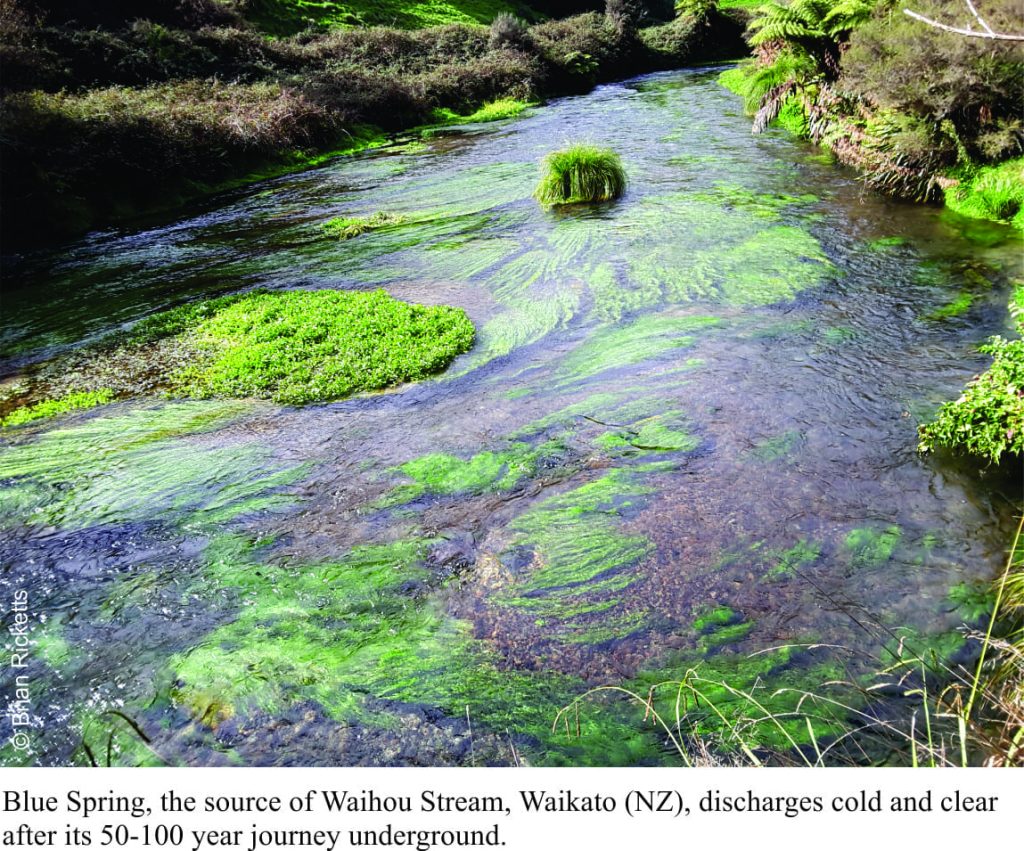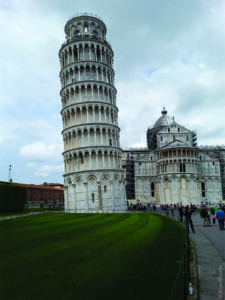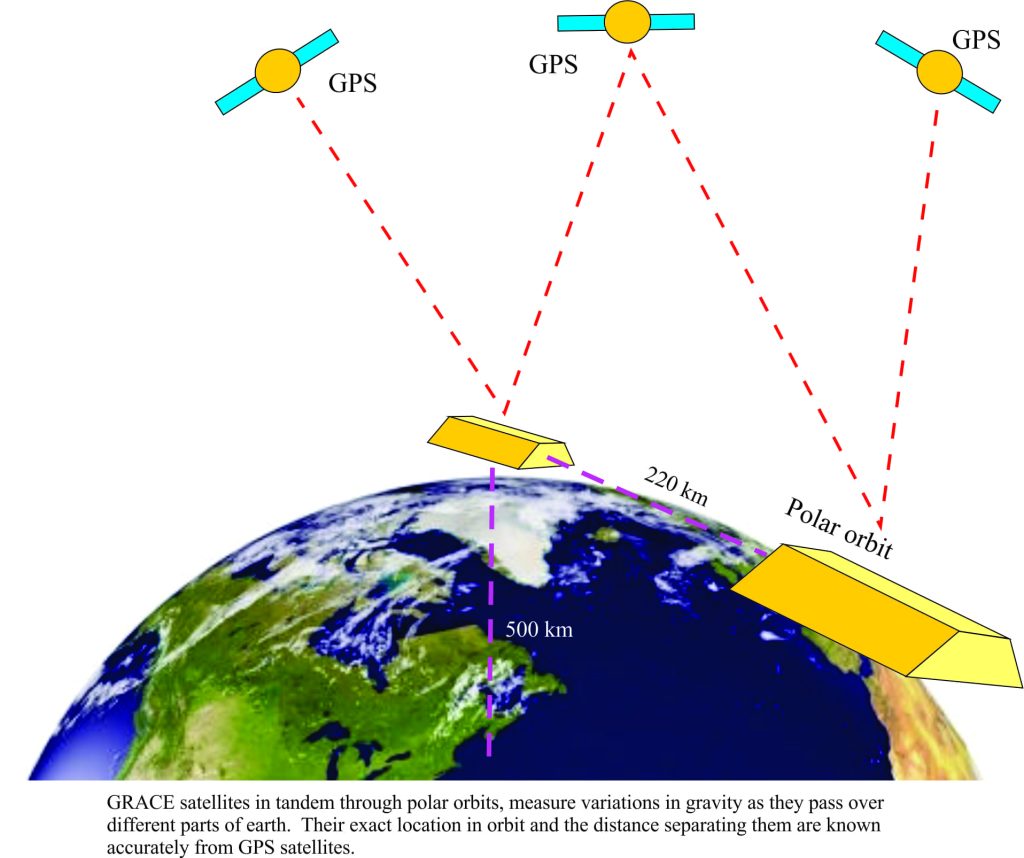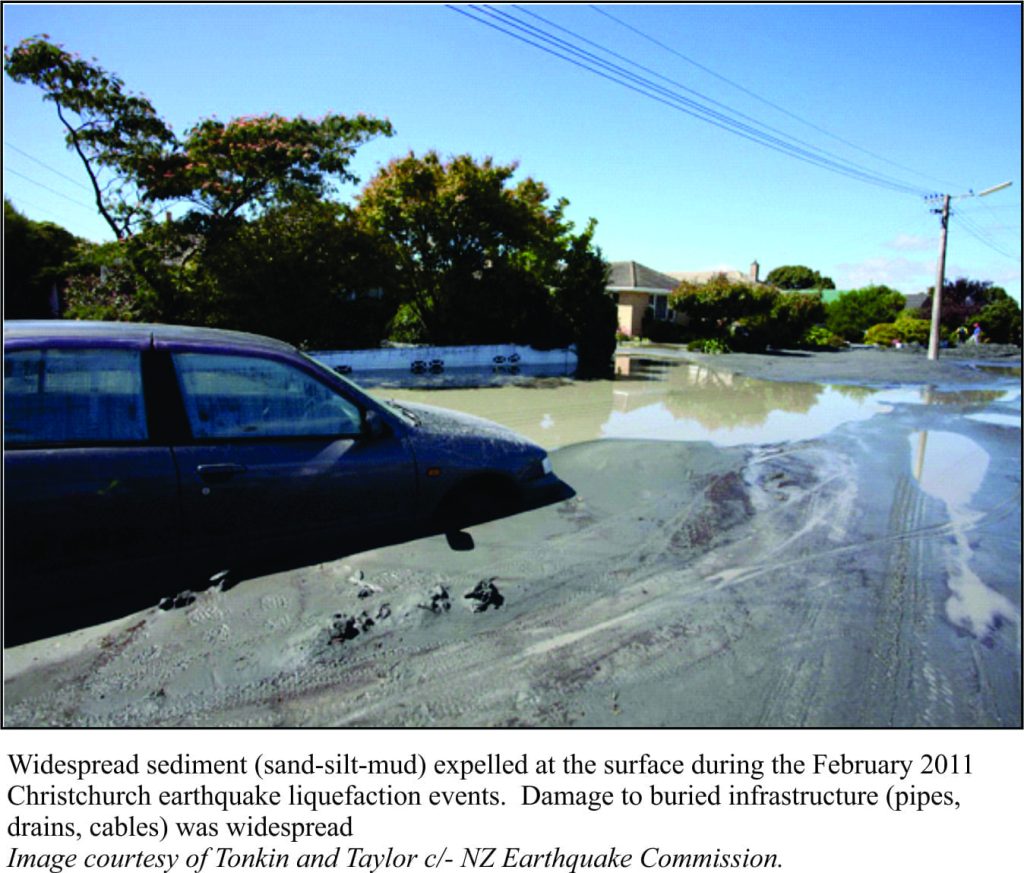It rains quite a bit on Mamaku Plateau, the tableland underlain by volcanic debris that was deposited violently 240,000 years ago; an eruption that also gave rise to Lake Rotorua caldera (central North Island, New Zealand). Some of that rain seeps into the myriad fractures, nooks and crannies, and heads west as groundwater. Fifty to 100 years later that same water emerges, chilled to a cool 11oC, at Blue Springs (about 40km west of Rotorua). Spring water here flows at 42 cubic metres per minute (9,240 gallons per minute), enough to maintain a decent-sized stream (Waihou Stream). Continue reading
Tag Archives: watertable
A misspent youth serves to illustrate groundwater flow
The mystery of groundwater flow solved!
Groundwater is always on the move. Under some conditions, in fractures or other large conduits, it can move quickly; almost at a walking pace. Under other conditions it moves inexorably slowly, like fractions of a millimeter a year. Regardless, it is always compelled to move. Movement requires energy. Where does this energy come from? What drives the flow of groundwater? Answers to these questions provide the foundations to the science of hydrogeology. Continue reading
Stabilisation of an architectural icon; the Leaning Tower of Pisa
Sunday in Pisa proved to be a welcome change from the usual tourist-cramped, shoulder-barging throngs of popular attractions in Tuscany. No problem finding a seat in a decent café, en route to the Piazza del Miricoli. Cross the street, turn a corner and there – the massive, white-marbled Pisa Duomo, Romanesque grandeur with a veneer of 21st Century scaffolding. But the sense of balance normally attributed to cathedrals, is disrupted by the stand-alone bell tower that leans precariously, like a drunk looking for a lamppost. The Leaning Tower of Pisa has been looking for a lamp-post for almost one thousand years. And for a thousand years, people have been drawn to the tower not because it is particularly beautiful, but because it looks like it is about to fall over. Continue reading
Monitoring groundwater from space
You could be excused for labeling this title conspiratorial, the brutal reality encapsulated in Alan Parsons prog rock group’s signature song or a Helen Mirren thriller. And if that is your inclination, don’t bother reading any further because this post deals with far more mundane uses of remotely sensed data. The data sets are generated by two groups of satellites that measure very different attributes of the earth, gravity and light spectra. Teasing the data has given us multiple stories of how systems like surface and groundwater are responding to human activities and natural processes. Some of these stories make grim reading.
Liquefaction; more than a sloppy puddle at the beach
Most of us at some time have gleefully created our own liquefied puddle by stomping on wet beach sand. I once showed my kids, intent on explaining the scientific intricacies of liquefaction, but being teenagers at the time they walked off in embarrassment. But liquefaction is much more than a trick at the beach; it is a process that can have devastating consequences for built structures and natural slope stability. Continue reading
Groundwater contamination; messing around with aquifers


Unfortunately, because of foolishness, greed, and ignorance, we have managed to contaminate many important aquifers
The incident (September, 2016) involving wastewater ingress via a sinkhole to the Floridan Aquifer in Polk County, Florida is yet another reminder of the susceptibility of groundwater to contamination. Other recent events like the 2016 Samarco tailings dam failure in Brazil (caused by loading of weak, groundwater-saturated materials), the 2010 Kolantar red mud dam failure in Hungary (mostly caustic, iron oxide, aluminium oxide, but worrying levels of chromium, lead and mercury), and Imperial Minerals 2014 Mount Polley dam failure tailings dam failure, all had immediate and devastating effects on surface water. In the longer term it is likely that downstream shallow aquifers have also been compromised. Continue reading
Whiskey is for drinkin’; water is for fightin!


This is the first in a series of posts on underground water, or groundwater. The posts will outline, with a non-specialist perspective, the science of aquifers, groundwater movement, how groundwater interacts with surface water, water extraction-pumping, and contamination. Continue reading





